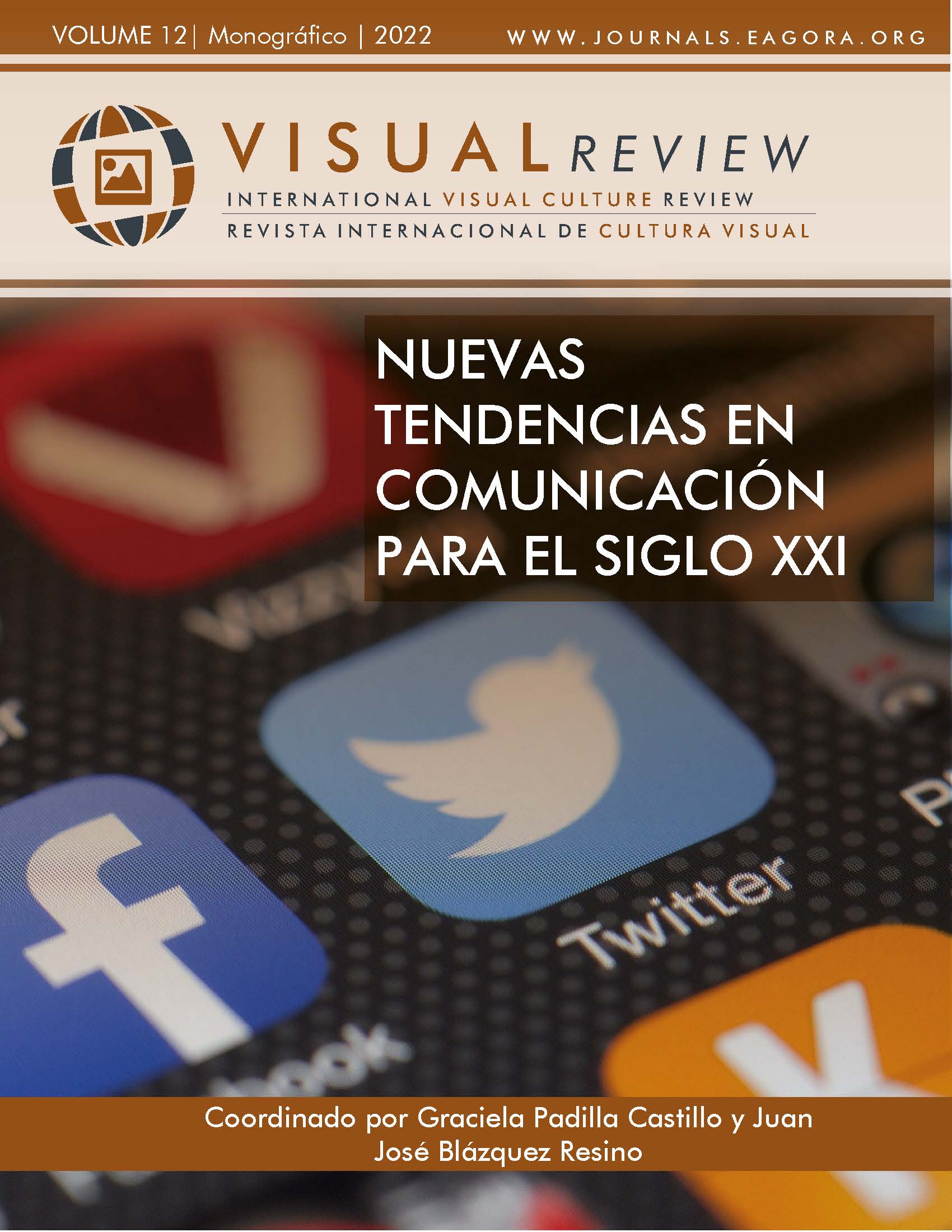Reconfigurations of Identity in Mixed Realities: the Virtual, Corporeality and the New Post-Human
DOI:
https://doi.org/10.37467/revvisual.v9.3740Keywords:
virtual, corporeality, cyberformance, post-human, metaverse, avatar, virtual worldAbstract
COVID 19 confinements changed our relationship with the computer: we use it more but not necessarilly better. In these times education, work, entertainment and art resort to social media, video streamming and online platforms. We believe that the current reflection on this Human Computer Interaction can gain from the experiments of cyberformance – the performance art the crosses physical and virtual environments – both at a theoritical level, through concepts like virtual reality or corporeality, and at an empirical level, previewing the creation of intermedial interfaces that develop our post-human condition in a more embodied, integrated and freer way.
Downloads
Global Statistics ℹ️
|
445
Views
|
250
Downloads
|
|
695
Total
|
|
References
Aas, B. G.,Emmelkamp, P. e Meyerbroker, K. (2009). Who am I – and if so, where? An experiment on personality in online virtual realities. Proceedings of the SLactions International Conference 2009, p. 28-38. https://hdl.handle.net/1822/42136
Alves de Sá, C. F. (2010). O que é um interface? Da entificação à identificação do interface enquanto complexo mediador. Tese de doutoramento em Ciências da Comunicação, Faculdade de Ciências Sociais e Humanas, Universidade Nova de Lisboa (repositório).
Boellstorff, T. (2008). Coming of Age in Second Life – An Antropologist Explores the Virtually Human. Princeton University Press.
Deleuze, G. (2004), Difference and Repetion. Continuum. Ed. original 1968.
Frias, P. (2010). Novos Colonos – Comunicação, representação e apropriação do espaço em mundos virtuais online - a comunidade Portuguesa em Second Life. Tese de doutoramento em Ciências da Comunicação, Faculdade de Ciências Sociais e Humanas, Universidade Nova de Lisboa (repositório).
Gouveia, P. (2006). Joga Outra Vez – Um Conjunto de Objectos que nos Contam Histórias Inteligentes. Tese de doutoramento em Ciências da Comunicação, Faculdade de Ciências Sociais e Humanas, Universidade Nova de Lisboa (repositório).
Idhe, D. (2002).Bodies in Technology. University of Minnesota Press.
Haraway, Donna (1991). Simians, Cyborgs and Women: The Reinvention of Nature. Routledge.
Hayles, N. K. (1996). Embodied virtuality or how to put bodies back into the picture. In Mary Anne Moer e Douglas MacLeod (Ed.), Immersed in Technology: Art and Virtual Environments (pp. 1-28). The MIT Press.
Hayles, N. K. (1999). How we became post-humans: virtual bodies in cybernetics, literature and informatics. The University of Chicago Press. DOI: https://doi.org/10.7208/chicago/9780226321394.001.0001
Lévy, P. (1998). Becoming Virtual - Reality in the digital age. Plenum Trade.
Peters, F. E. (1983). Termos Filosóficos Gregos - Um léxico histórico. Fundação Calouste Gulbenkian.
Valverde, I. C. (2010). Interfaces-Dança-Tecnologia: um quadro teórico para a performance no domínio digital. Fundação Calouste Gulbenkian e Fundação para a Ciência e a Tecnologia.
Žizek, S. (1992). From Virtual Reality to the Virtualization of Reality. In Peter Weiber (Ed.), On Justifying the Hypothetical Nature of Art and the Non-Identical Within the Object World (pp. 127-136). University of Texas Press.
Downloads
Published
How to Cite
Issue
Section
License
Those authors who publish in this journal accept the following terms:
-
Authors retain copyright.
-
Authors transfer to the journal the right of first publication. The journal also owns the publishing rights.
-
All published contents are governed by an Attribution-NoDerivatives 4.0 International License.
Access the informative version and legal text of the license. By virtue of this, third parties are allowed to use what is published as long as they mention the authorship of the work and the first publication in this journal. If you transform the material, you may not distribute the modified work. -
Authors may make other independent and additional contractual arrangements for non-exclusive distribution of the version of the article published in this journal (e.g., inclusion in an institutional repository or publication in a book) as long as they clearly indicate that the work was first published in this journal.
- Authors are allowed and recommended to publish their work on the Internet (for example on institutional and personal websites), following the publication of, and referencing the journal, as this could lead to constructive exchanges and a more extensive and quick circulation of published works (see The Effect of Open Access).













